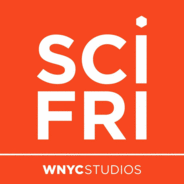Archeologists in movies have a reputation for being hands-on, like Indiana Jones unearthing hidden treasure, or Lara Croft running through a temple. Archeology in real life tends to be a bit more sedentary. But some archeologists are committed to getting their hands dirty—even recreating the stinky, slimy, and sometimes tasty parts of ancient life.Science writer Sam Kean enmeshed himself in the world of experimental archaeology for his new book Dinner with King Tut: How Rogue Archaeologists are Recreating the Sights, Sounds, Smells, and Tastes of Lost Civilizations. He joins Host Ira Flatow to discuss making stone tools, launching catapults, and DIY mummies.Guest: Sam Kean is a science writer and author of Dinner with King Tut: How Rogue Archaeologists are Recreating the Sights, Sounds, Smells, and Tastes of Lost Civilizations. Transcripts for each episode are available within 1-3 days at sciencefriday.com.
Subscribe to this podcast. Plus, to stay updated on all things science, sign up for Science Friday's newsletters.

Talk
Science Friday Folgen
Covering the outer reaches of space to the tiniest microbes in our bodies, Science Friday is the source for entertaining and educational stories about science, technology, and other cool stuff.
Folgen von Science Friday
1182 Folgen
-
Folge vom 08.10.2025How Archaeologists Try To Smell, Hear, And Taste The Past
-
Folge vom 07.10.2025Moth Survival Strategies And A Rodent Thumbnail MysteryIf you’re a moth trying to stay uneaten, there are competing strategies. Some moths rely on camouflage, trying to blend in. Other moths take the opposite approach: They’re bold and bright, with colors that say “don’t eat me, I’m poison.” Biologist Iliana Medina joins Host Flora Lichtman to describe a study that placed some 15,000 origami moths in forests around the world to investigate which strategy might work best. Then, mammologist Anderson Feijó and evolutionary biologist Rafaela Missagia join Flora to dive into another evolutionary conundrum: why so many rodents have thumbnails. Guests: Dr. Iliana Medina Guzman is a Senior Lecturer in the School of BioSciences at the University of Melbourne in Australia.Dr. Anderson Feijó is a mammal curator at the Field Museum in Chicago. Dr. Rafaela Missagia is an assistant professor at the University of São Paulo in Brazil.Transcripts for each episode are available within 1-3 days at sciencefriday.com. Subscribe to this podcast. Plus, to stay updated on all things science, sign up for Science Friday's newsletters.
-
Folge vom 06.10.2025As The CDC Falters, How Do We Fill Public Health Gaps?Our country’s public health system is ailing. With layoffs and leadership changes at the CDC, changing vaccine guidelines, a government shutdown, and declining public trust—where do we go from here? Can state and local public health agencies pick up the slack? Are there other solutions?Host Flora Lichtman talks with former CDC director Tom Frieden to put these questions into perspective.Guest: Dr. Tom Frieden is a former CDC director, president and CEO of Resolve to Save Lives, and author of The Formula for Better Health: How to Save Millions of Lives—Including Your Own.Transcripts for each episode are available within 1-3 days at sciencefriday.com. Subscribe to this podcast. Plus, to stay updated on all things science, sign up for Science Friday's newsletters.
-
Folge vom 03.10.2025Anthropologists Have A Bone To Pick With New Skull FindingThere’s fresh drama in the field of human origins! A new analysis of an ancient hominid skull from China challenges what we thought we knew about our ancestral family tree, and its timeline—at least according to the researchers who wrote the paper. The new study claims that Homo sapiens, and some of our relatives, could have emerged at least half a million years earlier than we thought. But big claims require big evidence.Anthropologist John Hawks joins Host Flora Lichtman to piece together the details.Guest: Dr. John Hawks is an anthropologist and professor at the University of Wisconsin-Madison.Transcripts for each episode are available within 1-3 days at sciencefriday.com. Subscribe to this podcast. Plus, to stay updated on all things science, sign up for Science Friday's newsletters.
